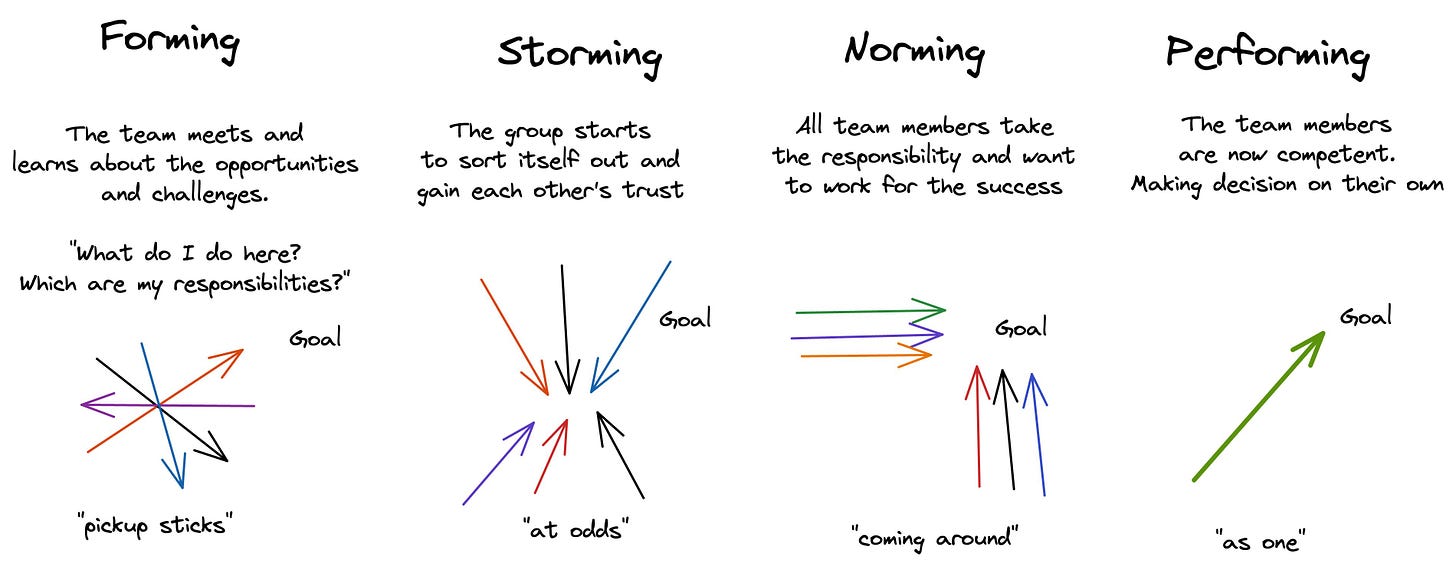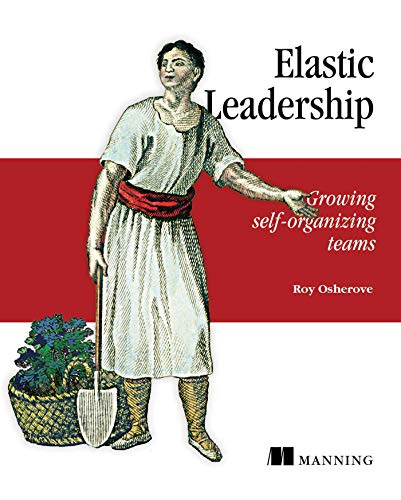Why your leadership style should adapt to the team needs
It implies being a Dictator using a Command & Control to reach Self-Organizing teams.
I share this diagram with other leaders a lot. It shows that a team goes in different phases and so your leadership style should do.
It's a common mistake to give autonomy to a team that needs direction. In this post, I explain the leadership style depending on the team state combining 4 stages of a team with Elastic Leadership, a book I have relied a lot on how I lead nowadays.

Why this post
I have seen a huge surge within the industry to “empower teams” and give “autonomy” to be a “good leader”. And I mark “good leader” in bold because that’s what’s concerning me.
The focus is on the leader instead of the team, and I’m concerned after seeing bad practices from leadership styles going in this direction that harms more the team than it’s beneficial, yet always with the best intentions.
As leaders, we are responsible and accountable for the team and we need to be careful about the way we lead, how it impacts the team and the business.
That’s why I consider giving autonomy for the sake of “being a good leader based on industry standards” without a careful understanding of the teams and business situation to be a red flag on the leadership 🚩.
Again, behind empowering teams, there is always a good intention, yet I find that in leadership we miss guidance on how to move from a “Command and Control”, seen as bad but necessary as you will see in this post, to “Self-Autonomous teams”, seen as good but challenging to become. I hope I can help you to connect the dots!
Forming–Storming–Norming–Performing Model
A lot has been already written about Tuckman's stages of group development or the 4 stages of a team. I’m skipping this part and assuming you’re already familiar with it. If not, I still think you will be able to follow the post due to some pictures
Looking at the 4 stages of a team. We can see that we want to reach Performing Stage, where the team makes decisions on their own, which is the same end goal as "self-organizing teams" described in Elastic Leadership.
Elastic Leadership Modes

Both models say the same, Self-Autonomous/Performing-Empowered Teams is what we want. No discussion here! But how to reach that moment? 🤔
Connecting 4 Stages of a Team with Elastic Leadership
Let's see the leadership style against the 4 stages. They somehow match so well, it even seems natural.
Yet, Elastic Leadership helps you to know how to navigate between modes, read the situation of the team, and adapt yourself to the team and business needs. A dimension I was missing when I started to lead teams.
Elastic Leadership gives you guidance on what to do to move between those stages in a healthy way, how to detect in which stage you’re.
IMHO, Elastic Leadership is way more powerful compared to the 4 stages of a team due to its completeness and simplicity.
Everything is dynamic
Reality 1. You move between those models several times per quarter
My experience is that staying in the Self-Organized Mode or Performing Stage for a long time is super challenging and requires a team with high cohesion, high trust, and experience working together in the same context for a long time.
I don’t know you but nowadays, with the high people rotation, it’s quite hard to get to this point. That’s why you usually move between the modes frequently during the quarter or even a month.
Reality 2. The team might be autonomous in one part but need direction in another.
What I learned is that the team goes through several moments of maturity in specific areas but not in all of them. It’s kinda obvious… but I needed to step in a rock to learn that 😅
I would also map the team maturity level depending on the responsibilities we have. Something like:
I usually map those things that we do, and focus on the maturity moment to the team to reach that mode of “Self-Organized”.
The things that are more day-to-day, that’s the first thing I aim to delegate and help the team become Self-Organized, meanwhile, I keep with the more high-level stuff until a good maturity is gained that, on adverse conditions, there’s no step back to a previous mode.
This process is slow yet I didn’t find a way yet to make this faster without damaging the teams and the business.
Wrap-up
What I aim to show to new leaders is that, even though they want to be in the performing stage with an empowered team, giving them autonomy, they cannot skip the 4 stages of a team and they do need to adapt their leadership style to the team's needs.
And it implies being a Dictator using a Command and Control Style. Which it's good as long as you do your job to move into learning mode to at the end be in performing mode.
The worst we can do as leaders is wrongly read the team situation and adopt a leadership style that harms more than the opposite. Like being in Forming-Storming and be using a Self-Organizing Mode.
Book reference
The book Elastic Leadership gives you guidance on how to move between stages/modes. 100% recommended.







